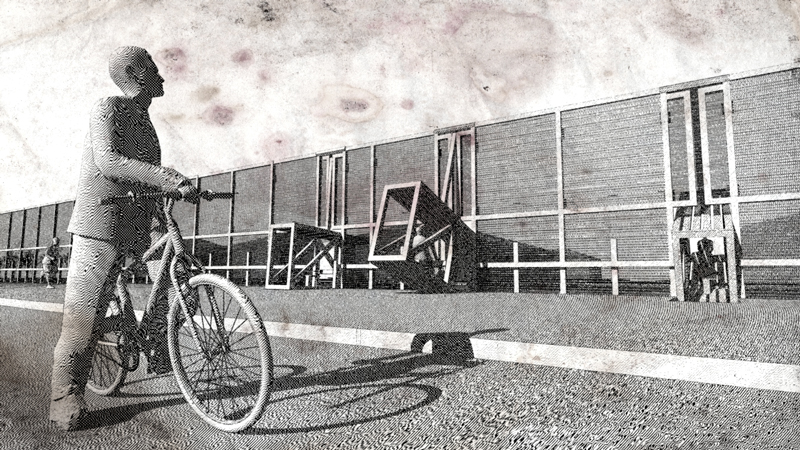Much of the border, approximately XXX miles, are defined by a geologic feature in flux. How can the permanence and stasis reflected by a physical fence that defines a boundary be utilized to determine a context in flux?
According to the National Park Service, Chamizal National Memorial is a “Peace Park” that memorializes the settlement of a 100-year border dispute between the U.S. and Mexico where “not one shot was fired; not one war was waged”. So what was the 100-year argument about?
The official end to the Mexican-American war was settled by the Treaty of Gudalupe Hidalgo of 1848, which specified a new boundary between the two countries. Much of the boundary for the new border was defined and specified as the middle of the Rio Grande river. It included mention that the border be defined as the center of the river regardless of any alteration to the river channel or banks and that any such transformations must result from gradual natural causes. If the river changes course, as rivers do, because of deposit of clay, silt, sand and gravel, the political border changes with the change in the course of the river. However, if the river changes course due to avulsion, the previous course of the river continues to define the border.
Just two years after the signing of the Treaty of Guadalupe Hidalgo, the Rio Grande River that separated the cities of El Paso and Juarez, began to shift south, especially in 1884 as the consequence of a flood. By 1873, approximately 600 acres that were previously south of the 1848 Rio Grande, were now north of the river, effectively becoming property of the United States and was settled and incorporated as part of El Paso. In 1895 a suit was filed in the Juárez Primary Court of Claims for the punitive owner of the land, Pedro I. García, who held title to the land since 1827.
As a consequence of this claim, the Mexico and the United States agreed to the dispute settled by the International Boundary Commission, which had been created in 1889, to determine if the change in the river’s course had been gradual, whether the boundaries set by the treaties were fixed, and whether the 1884 treaty applied.[1]the claims by Mexico was that the boundary never changed (only the river) and therefore the land was Mexican territory. The U.S. claimed that the boundary was a result of gradual erosion, therefore the 1884 treaty applied, thus making it U.S. soil.
The Commision’s recommendation was that a portion of land between the 1852 riverbed and the 1864 river would become U.S. territory and the remainder of the land would become Mexican territory. The U.S. rejected this proposal and during a period of that lasted several years without any decision, a parcel of land located in the middle of the river, called Isla de Córdoba, or Cordova Island, which could be seen as an island belonging to Mexico but inside U.S. territory, became a sort of free-zone that was not policed by authorities from either side. Cordova Island thus became a haven for criminal activity and illegal border crossings.
Between 1910 and 1963 many more initiatives were attempted to resolve the debate, but it was finally agreed upon on January 14, 1963 under President John F. Kennedy’s administration, which awarded 366 acres of the Chamizal area to Mexico as well as 71 acres east of Cordova Island. The U.S. was awarded 193 acres of Cordova Island from Mexico and the U.S. was also paid for 382 structures, thus 382 American works of architecture and building now became absorbed by Mexico. The make the separation clear, both nations agreed to rechannel the Rio Grande/Rio Bravo and share the costs. The American-Mexican Chamizal Convention Act of 1964 formally settled the dispute and in October of 1967, Presidents Lynden B. Johnson and Gustavo Díaz Ordaz met and shook hands across the divide.

